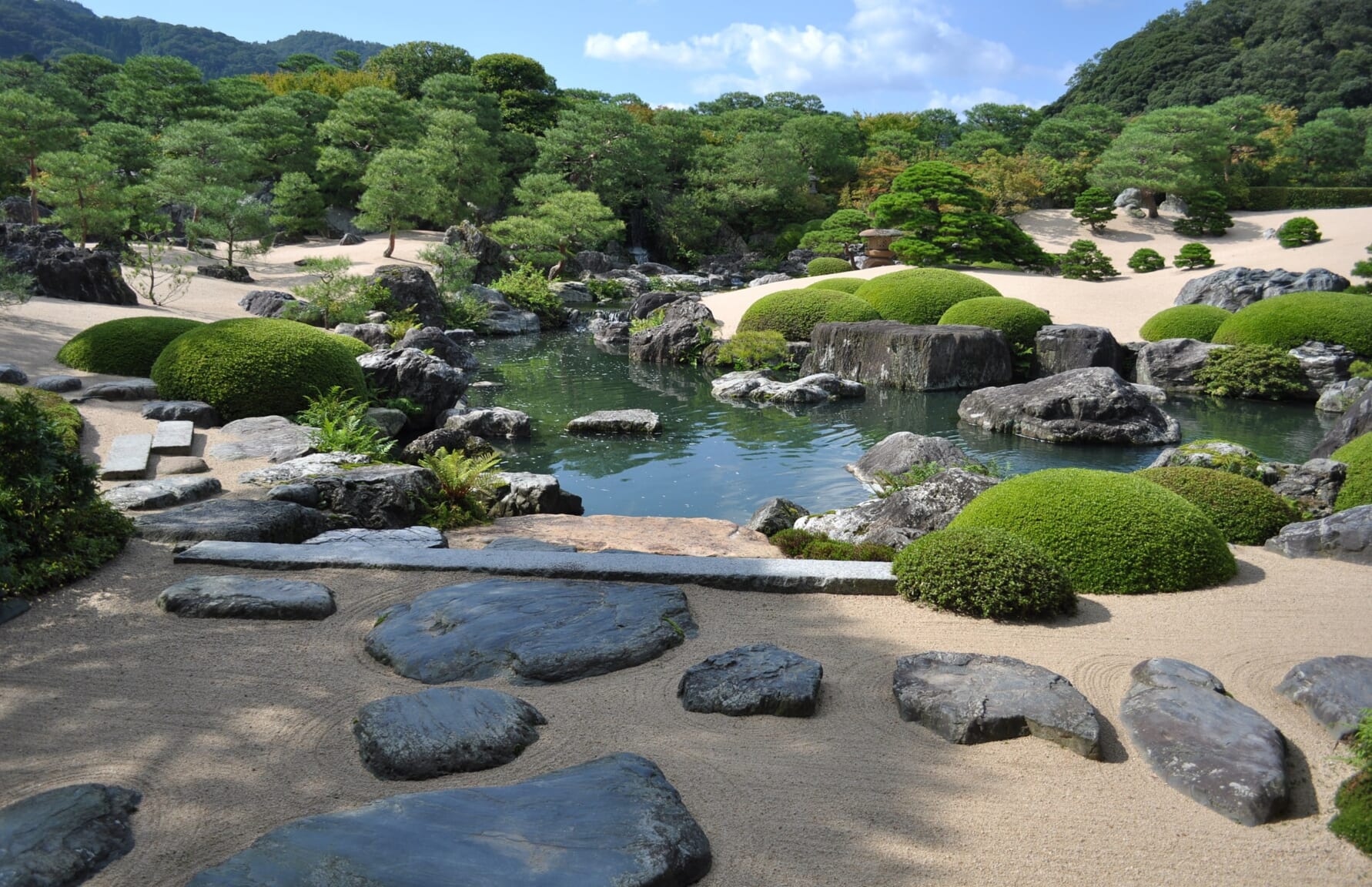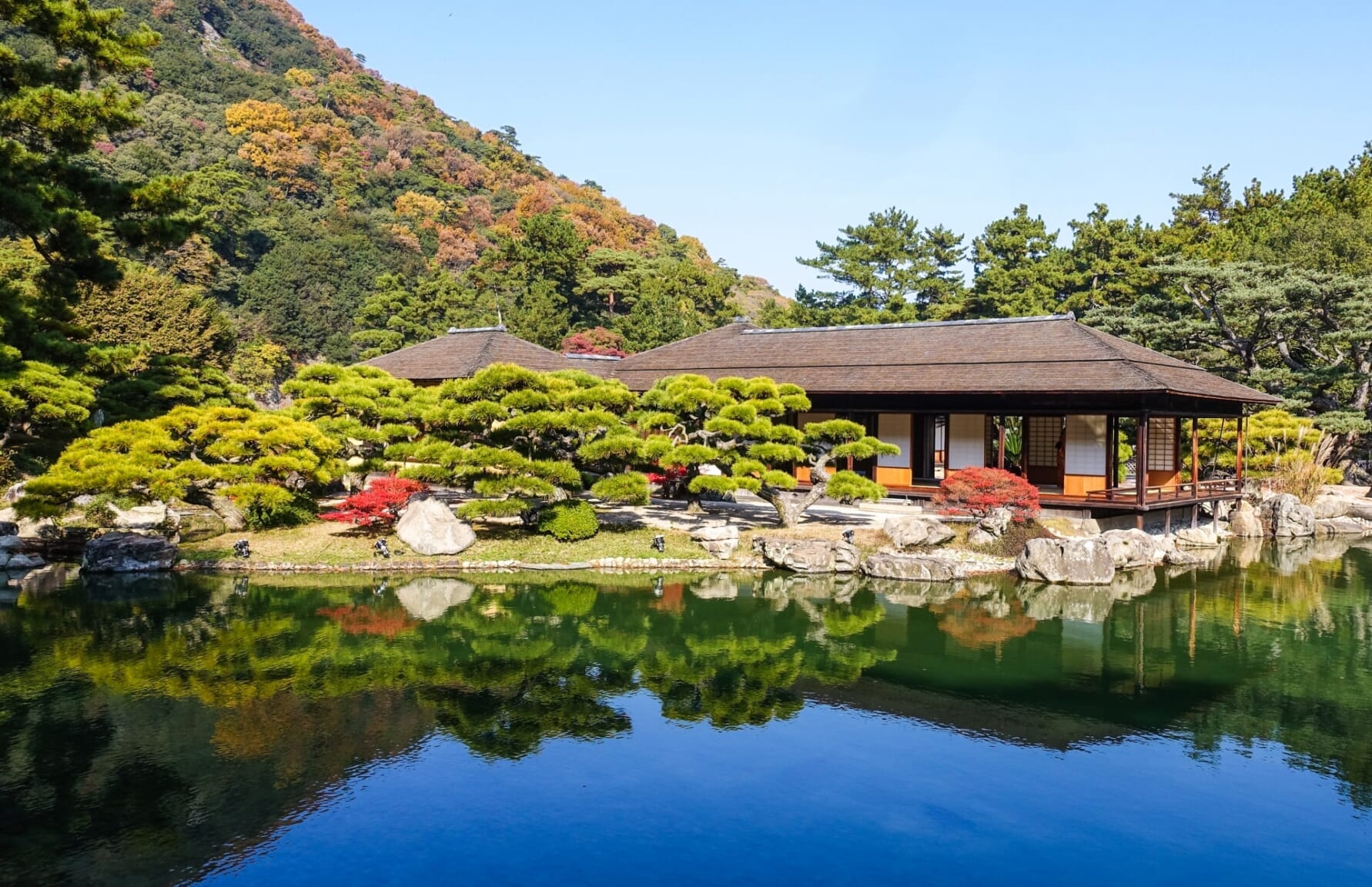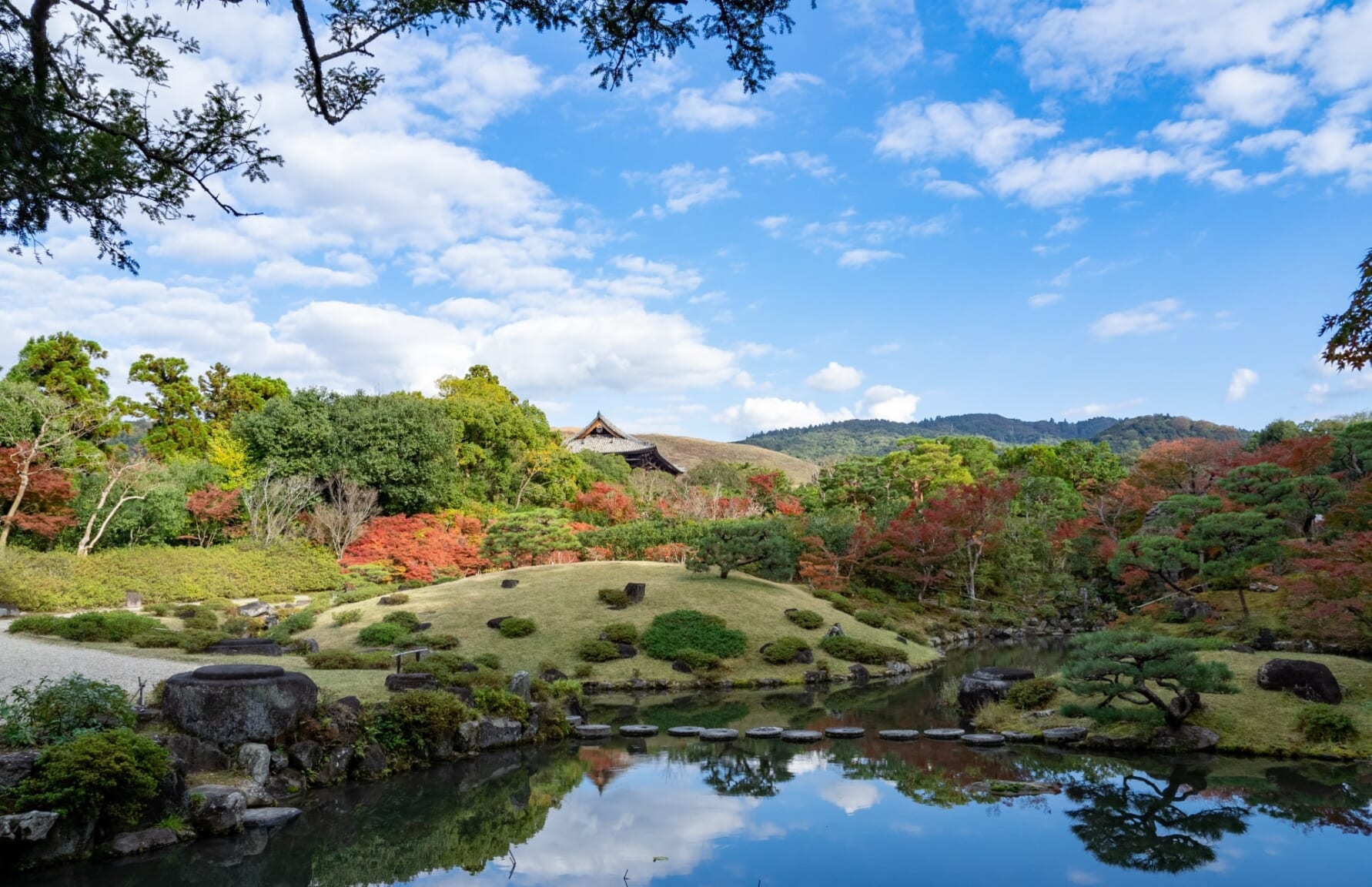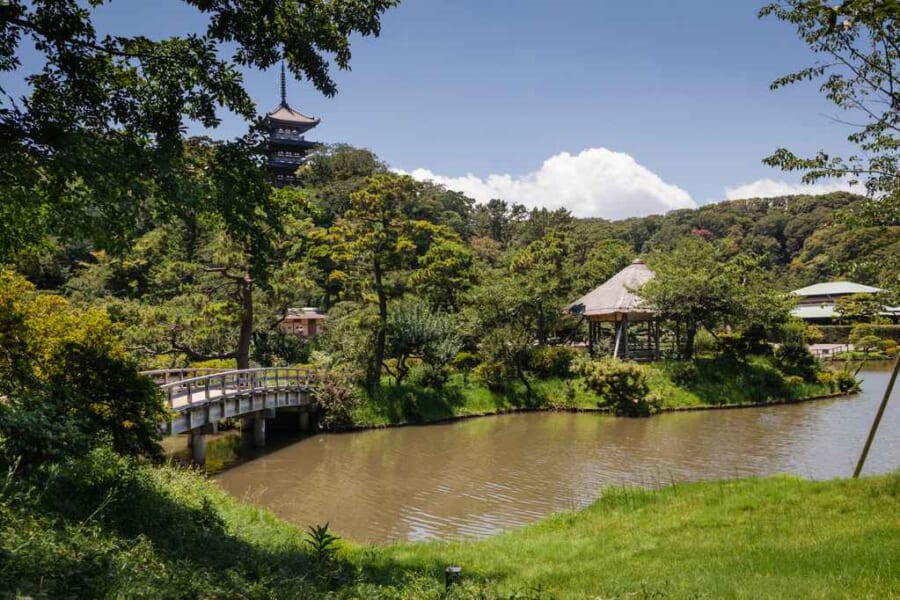15 Best Gardens in Japan
A Journey Through Tranquil Beauty and Timeless Tradition

Japan’s gardens are portals into the country’s historical depth, cultural richness, and philosophical traditions. They offer vibrant landscapes where human ingenuity and natural beauty converge, crafting serene scenes that shift with the seasons. The following exploration of 15 of Japan’s finest gardens will guide you through a diverse array of horticultural wonders, each with a unique charm and story to unfold.
Features of Japanese Gardens
Japanese gardens represent a delicate balance between raw nature and human artistry, encapsulating the country’s philosophical and aesthetic ideals. They are meticulously crafted to portray miniaturized, idealized landscapes, often featuring key elements like ponds, bridges, ornamental rocks, water features, and carefully chosen and positioned trees and flowers.
Asymmetry and irregular shapes are embraced as reflections of natural beauty, while elements are placed to create pleasing compositions from multiple vantage points. Many gardens include tea houses where visitors can enjoy quiet reflection, emphasizing the gardens’ role as havens of tranquility and mindfulness.
1. Kenrokuen Garden (Ishikawa)

No matter the season, Kenroku-en offers a distinct visual treat, from the snow-laden Yukitsuri trees in winter to the cherry blossoms in spring, and the irises in summer to the vibrant foliage in fall. Originally built in the decade of 1620 by the Maeda clan, its development continued until the 1840s, subsequently opening to the general public for the first time in 1871.
 Access Access |
17-min bus from Kanazawa Station |
|---|---|
 Official Website Official Website |
https://www.pref.ishikawa.jp/siro-niwa/kenrokuen/e/index.html |
2. Kairakuen Garden (Ibaraki)

Built in 1842 by the daimyo of the Mito Domain, it was envisioned from the beginning as a public park, its name means “a garden to be enjoyed together” (although commoners could only access it on specific days at the time). The garden’s beauty extends beyond the plum trees to a bamboo grove, cedar woods, and the traditional Kobuntei house where you can enjoy panoramic views of the garden in its seasonal bloom.
 Access Access |
5-min walk from Kairakuen Station |
|---|---|
 Official Website Official Website |
https://ibaraki-kairakuen.jp/en/language/ |
3. Korakuen Garden (Okayama)

Its spaciousness, coupled with the strategic use of the concept of “borrowed scenery,” creates a sense of harmony between the garden and its surrounding environment. The garden was built in 1700 by the Ikeda clan, lords of the Okayama Domain, next to Okayama Castle, and opened to the general public in 1884 when Okayama Prefecture became the owner of the garden.
 Access Access |
8-min walk from Shiroshita tram station |
|---|---|
 Official Website Official Website |
https://okayama-korakuen.jp/section/english/ |
4. Adachi Museum of Art (Shimane)

The Adachi Museum of Art (足立美術館) in Yasugi, Shimane Prefecture, presents a fascinating blend of traditional Japanese art and garden design thanks to its masterfully designed garden that complements the museum’s impressive art collection. The garden itself is considered a “frameless picture,” with scenes meticulously designed and maintained to reflect the changing seasons.
Viewed from within the museum through expansive windows, the garden blends seamlessly with the exhibited artworks, creating an extraordinary fusion of nature and human creativity. To no one’s surprise, the garden has been consistently ranked at the top for two decades in an American specialized magazine with the votes of experts around the world. Furthermore, it has also been awarded 3 stars by the Michelin Green Guide.
▶Find out more about The Adachi Museum of Art: Adachi Museum of Art: the Most Beautiful Garden in Japan
 Access Access |
10-min drive from Arashima Station |
|---|---|
 Official Website Official Website |
https://www.adachi-museum.or.jp/en/ |
5. Ryoanji Temple Rock Garden (Kyoto)

The garden’s design promotes a sense of calm and is intended to facilitate meditation, embodying the Zen philosophy’s emphasis on simplicity and tranquility. There is no consensus about the construction date but the garden was likely built around mid or late 15th century after the temple’s foundation in 1450.
 Access Access |
10-min walk from Ryoanji Station |
|---|---|
 Official Website Official Website |
http://www.ryoanji.jp/smph/eng/ |
6. Saihoji Temple (Kyoto)

Originally belonging to another buddhist school, and later resurfacing as a Zen temple, the garden used to be made of white sand but lack of funds prevented proper maintenance and the environment’s moisture resulted in the growth of the moss, eventually becoming the temple garden’s main feature. A walk here feels like a journey through a verdant fairy tale, and the requirement for advance reservations preserves the garden’s tranquility.
▶More information about Saihoji Temple: Moss Garden at Saihoji Temple, Kyoto
 Access Access |
10-min bus from Matsuo-Taisha |
|---|---|
 Official Website Official Website |
http://saihoji-kokedera.com/en/top.html |
7. Tenryuji Temple Garden (Kyoto)

The garden was designed by the famed Zen monk Muso Soseki, aiming to inspire contemplation and reflection, maintaining a peaceful atmosphere amidst the city’s bustling surroundings.
More info: Tenryuji Temple: Kyoto’s Yet Another UNESCO World Heritage Site
8. Suizenji Temple Garden (Kumamoto)

The garden’s most iconic feature is a small hill that represents Mount Fuji. Visitors can also find a nearby teahouse to enjoy the scenery from, and a Noh theater stage, offering insights into traditional Japanese culture. The garden was built along the buddhist temple and the teahouse in the 1630s by the daimyo of the Higo Domain.
9. Hamarikyu Garden (Tokyo)

Amidst the city’s hustle, Hama Rikyu’s peony and plum fields, a 300-year-old pine tree, and a teahouse on an island offer a tranquil, scenic retreat. The garden was built as part of a private villa for the Tokugawa clan in 1654 and was opened to the general public in 1946 after garden ownership was transferred to the Metropolitan Government from the Imperial household.
More info: Hamarikyu Garden: Scenic Japanese Garden near Tsukiji Fish Market
 Access Access |
10-min walk from Shiodome |
|---|---|
 Official Website Official Website |
https://www.tokyo-park.or.jp/park/hama-rikyu/ |
10. Katsura Imperial Villa (Kyoto)

The garden was built as part of a villa for Prince Hachijo Toshihito during the early 17th century, inspired by passages of The Tale of Genji, the classic novel from the 11th century. His son Toshitada went on to renovate and improve it, increasing the renown of the place.
More info: Katsura Imperial Villa, Kyoto’s Timeless Elegance
 Access Access |
13-min walk from Katsura Station |
|---|---|
 Official Website Official Website |
https://sankan.kunaicho.go.jp/english/guide/katsura.html |
11. Sankeien Garden (Kanagawa)

Its verdant landscapes, a three-storied pagoda, and seasonal events make it a much-loved destination for history enthusiasts and nature lovers alike. Its beautiful pond, vibrant flowers, and seasonal events provide a tranquil escape from the bustling city, making it a much-loved destination for locals and tourists alike.
12. Shukkeien Garden (Hiroshima)

Despite damages from the nuclear attack, it became a refuge for atomic bomb survivors during World War II. The garden reopened in 1951 after being restored and it stands today as a symbol of resilience and peace.
13. Ritsurin Koen (Kagawa)

Each scenic point in the garden reveals a thoughtfully curated view, serving as a canvas that paints a picturesque scene of every season. Its picturesque ponds, elegantly arched bridges, and traditional teahouses create a serene ambiance, offering a perfect setting for quiet contemplation and leisurely strolls.
 Access Access |
10-min walk from Ritsurin-Koen or Ritsurin-Koen-Kitaguchi Stations |
|---|---|
 Official Website Official Website |
https://www.my-kagawa.jp/ritsuringarden |
14. Isuien Garden (Nara)

This elegant garden’s proximity to notable cultural sites adds to its allure, making it a must-visit destination when exploring Nara. The garden was built during the late 17th century and parts of it were redesigned around the late 19th century, so distinct design styles can be appreciated on the garden layout.
 Access Access |
13-min walk from Kintetsu-Nara Station |
|---|---|
 Official Website Official Website |
https://www.isuien.or.jp/en/index.html |
15. Senganen Garden (Kagoshima)

Beyond the garden, visitors can explore the former residence of the Shimazu family and the clan’s private Shinto shrine. The garden, also known as Isoteien (磯庭園), was built in 1658 and the residence kept being used by the Shimazu even after the end of the feudal age until 1949 when the property was transferred to Kagoshima City and the garden opened to the general public.
Author’s Top Recommendation

Japan’s gardens are timeless windows into the country’s history, culture, and reverence for nature. They offer tranquil spaces for reflection, discovery, and a deeper appreciation of beauty in its myriad forms. Each visit is a journey, not just through lush landscapes, but also into the heart of Japan’s soul.
▽Subscribe to our free news magazine!▽
For more information about parks and gardens in Japan, check these articles below, too!
▽Related Articles▽
▼Editor’s Picks▼
Written by
Photographer, journalist, and avid urban cyclist, making sense of Japan since 2017. I was born in Caracas and lived for 14 years in Barcelona before moving to Tokyo. Currently working towards my goal of visiting every prefecture in Japan, I hope to share with readers the everlasting joy of discovery and the neverending urge to keep exploring.













